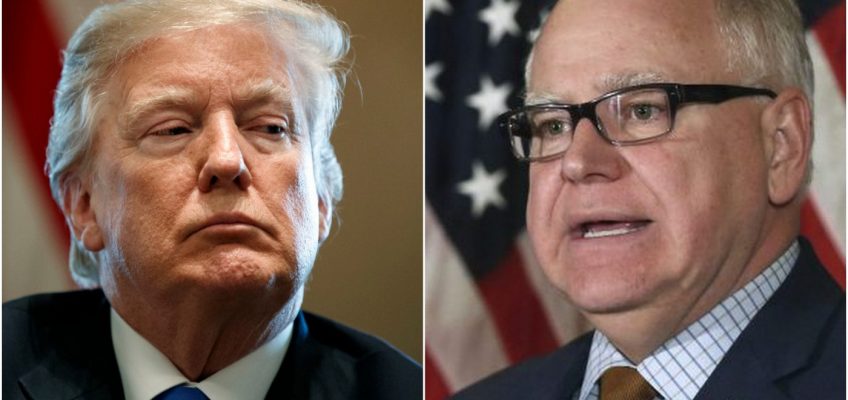Doing Somalis a disservice
There are approximately 80,000 Somali residents in Minnesota, most of whom work in jobs as varied as translators, nurses, hospital workers and in restaurants, meatpacking and other manual jobs. Are all of them fraudsters, gangsters and/or contributors to the terrorist group, al-Shabab in Somalia? Hardly.
Both Tim Walz and Donald Trump do the Minnesota Somali community a grave disservice, Walz by ignoring serious wrongdoing within the community to avoid criticizing a loyal political base, and Trump by disparaging Minnesota Somalis as a whole group.
Not treating Minnesota Somalis as individuals or stereotyping them as an ethnic/racial group is wrong, un-Minnesotan and un-American.
Richard M. Ryan, Woodbury
Wary of excesses in the name of DEI
I read with interest “So DEI doesn’t work. What would be better?” (Nov. 30). This was an opinion piece by Nina Stachenfeld chastising those critical of diversity, equity, and inclusion (DEI) programs.
I am a centrist Democrat. While I certainly support the ideal of people of color achieving greater success economically and otherwise, I am wary of excesses committed in the name of DEI. Prior to the New York Times Magazine story described below, DEI efforts had faced only minimal levels of accountability; following, many efforts under the DEI umbrella have been performative and counterproductive, in my opinion.
In October of 2024, the New York Times Magazine (hardly a right-wing publication) published a major story entitled “The University of Michigan doubled down on DEI; what went wrong.” The subheading was, “A decade and a quarter of a billion dollars later, students and faculty are more frustrated than ever.” This story established that the University of Michigan was at the leading edge of DEI amongst academic institutions from the mid-2010s through the time of the article. It implemented a staggeringly large program to promote diversity, equity and inclusion. The NYT Magazine story compellingly establishes that these efforts did not come anywhere near achieving the desired results. In fact, the efforts in many ways increased division and cynicism. In addition, persuasive evidence is provided that the DEI initiatives and culture restricted academic freedom and freedom of speech. The story is a dispassionate and scathing portrayal of institutional failure.
In my opinion, the University of Michigan example is reflective of DEI programs throughout the country, particularly after the murder of George Floyd: well intentioned, rich in resources, complete lack of accountability, limited tangible results, highly polarizing.
As he does, Donald Trump has gone much too far in his efforts to obliterate any shred of DEI programming throughout the country. However, that does not mean that DEI as it has been implemented cannot be legitimately critiqued (Stachenfeld notably does not present alternative approaches to implementing DEI).
Peter Langworthy, St. Paul
Paid leave: another opportunity for fraudsters?
Considering the actual and some alleged fraudulent situations funded by taxpayers in the state of Minnesota, wouldn’t this be a good time to put the upcoming “paid leave” program on hold?
We are all aware — Democrats and Republicans — that our lawmakers burned through an approximately $18 billion surplus two years ago instead of refunding it to taxpayers. Why should anybody trust the present leadership in administering a new benefits program? All the tax-paying residents of Minnesota deserve to have confidence that our money is being spent wisely and not initiating another opportunity for fraudsters in our state.
Kathleen Langer, St. Paul
Elect reps who will protect against abuse of power
I have never sensed fear of my government before (except maybe when I was stopped for speeding) until a recent Tuesday when I was locked into a classroom. The lockdown was an effort to protect immigrant students from possible detention by government agents reported to be in the area. I realized then how fearful it can be for anyone of a government that is skirting the law to advance its own agenda. That may include detaining persons in the wrong place at the wrong time as ICE agents seek to deport as many “illegal” persons as they can. It can also include persons at the highest levels of government who have to spend time and resources to defend themselves from retaliatory charges.
Please elect legislative representatives who will seek to protect any of us from abuse of government power.
Kenneth Gilmore, Oakdale
No third term
Let’s see. Gov. Walz was in charge and slow to respond when Minneapolis was looted and burned. He squandered an $18 billion surplus while simultaneously raising taxes. He was asleep at the wheel when Minnesotans were defrauded of at least $1 billion of their hard-earned tax dollars. Now he wants to run for a third term. You’ve got to be kidding. I’ve lived here all of my life and have never seen a more incompetent governor. He has sullied the reputation of the once great state of Minnesota and certainly doesn’t deserve a third term.
R.P. Merry, Chisago City
The economy is in shambles?
The Mall of America reported 235,000 people visited the mall on Black Friday. A record for that day. Cyber Monday sales were reported to be $14.25 billion. A record for that day. I personally went to Ridgedale mall and you could not find a place to park. Yet the liberal/progressive parties and news outlets are telling us once again to not believe our own eyes and ears when they tell us the economy is in shambles.
Don Anderson Jr, Cottage Grove
Blame somebody else
From Friday’s Pioneer Press on the state budget:
“Democratic-Farmer-Labor legislative leaders and Gov. Tim Walz blamed President Trump for the state’s fiscal issues”.
Does Gov. Walz ever take responsibility for anything? While Trump can be blamed for many things, mismanaging our state’s finances isn’t one of them. Who squandered the $18 billion state surplus? Who put in place programs that will drain our resources in the future? On whose watch did the biggest fraud in the US take place?
Walz reminds me of an 8th grade classmate who was the root of chaos on the playground. As soon as the nuns burst onto the scene he would literally point to someone else.
Gerald Kraut, St. Paul
Sainted
Stillwater Sunrise Rotary and 15 other area Rotary Clubs are grateful as this holiday season starts for the project supporting Down syndrome children in Idlib, Syria. The $21,000 project to buy and operate a shuttle bus to transport the children served by White Hearts Center in Idlib is in full operation just weeks after the funding was provided to them.
The new bus is currently in service with two staff members and a driver. These staff members receive special training on how to interact with children with Down syndrome to ensure their safety.
With this new service, students are included in therapy and community engagement opportunities that previously were inaccessible to them.
Learn more about the amazing people of White Hearts Center at www.whiteheartscenter.com.
Mark S. Fisher, Lake Elmo
Thanks for the Hamm preservation district
I want to extend my deepest gratitude to the Saint Paul City Council and to the residents of the East Side for the unanimous vote to grant historic designation to the Theodore Hamm Brewing Company Heritage Preservation District on Nov. 5. This decision represents more than a milestone for a development project — it is an affirmation of our shared belief in the future of the East Side and the people who call it home.
As someone who grew up in public housing after my family arrived in this country, I know personally what stable, affordable housing can mean for a family’s sense of dignity, belonging and possibility. My mom worked hard, and our community supported us. Those experiences shaped my values and fuel my commitment to building projects that serve and strengthen neighborhoods, rather than displace them.
The redevelopment of the Hamm’s site is an opportunity to revitalize an iconic place in St. Paul’s history while providing much-needed affordable housing, commercial and community spaces, and green spaces that will be open and welcoming to all. The project is designed to improve connections to Swede Hollow Park and the Bruce Vento Trail, and to create new gathering places that celebrate the East Side’s cultural richness and creativity.
I also appreciate the thoughtful approach St. Paul has taken to urban planning. The city’s removal of parking minimums and encouragement of more walkable, transit-connected development reflects forward-looking leadership. Our plan includes underground parking to meet residents’ needs while promoting a more vibrant, accessible environment.
But most importantly, this project has always been about community. The East Side has consistently voiced its desire for investment that honors its history, supports its families, and invites its future. I am proud that JB Vang is a local, family-owned firm founded and operating in St. Paul and uplifted by the people who live here. We are committed to the long term.
Thank you to the City of St. Paul, community leaders, neighborhood organizations, and the many residents who have shared their time, ideas, concerns and support. Together, we are ensuring that the Hamm’s site will not only be preserved, but renewed — so it can once again serve as a gathering place, a source of pride, and a home for opportunity on the East Side.
J. Kou Vang, Stillwater.
The writer is president and CEO of JB Vang
Related Articles
‘Kindness influencers’ pluck homeless mom off Minneapolis street, change her life
What should St. Paul Mayor-elect Kaohly Her focus on in 2026?
Here are the 2026 Winter Carnival buttons, designed by pointillist illustrator Randall Peterson
Broke for the holidays? 10 ideas to turn thrifting into gifting in St. Paul
Joe Soucheray: Walz can’t — or won’t — explain the fraud under his watch




